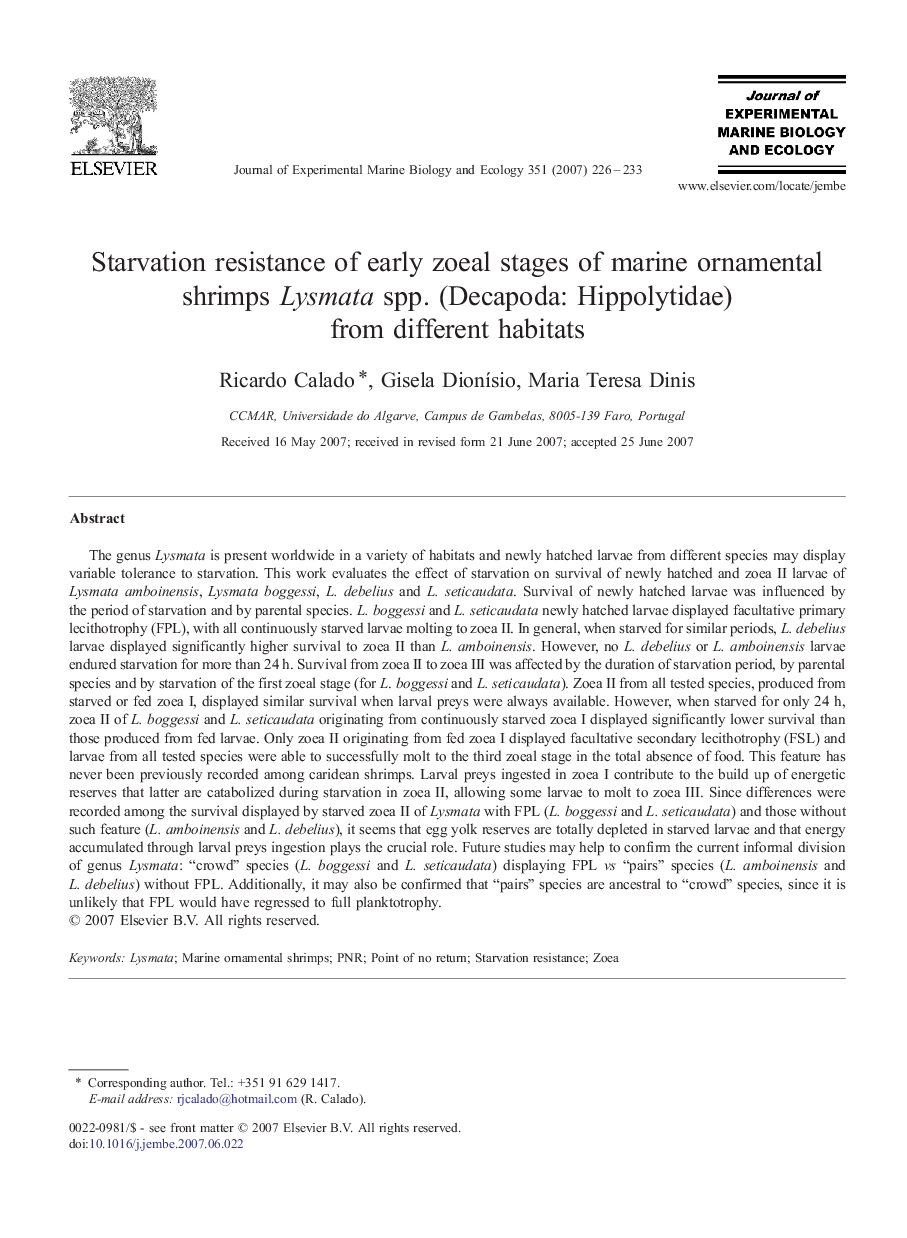| کد مقاله | کد نشریه | سال انتشار | مقاله انگلیسی | نسخه تمام متن |
|---|---|---|---|---|
| 4397552 | 1618487 | 2007 | 8 صفحه PDF | دانلود رایگان |

The genus Lysmata is present worldwide in a variety of habitats and newly hatched larvae from different species may display variable tolerance to starvation. This work evaluates the effect of starvation on survival of newly hatched and zoea II larvae of Lysmata amboinensis, Lysmata boggessi, L. debelius and L. seticaudata. Survival of newly hatched larvae was influenced by the period of starvation and by parental species. L. boggessi and L. seticaudata newly hatched larvae displayed facultative primary lecithotrophy (FPL), with all continuously starved larvae molting to zoea II. In general, when starved for similar periods, L. debelius larvae displayed significantly higher survival to zoea II than L. amboinensis. However, no L. debelius or L. amboinensis larvae endured starvation for more than 24 h. Survival from zoea II to zoea III was affected by the duration of starvation period, by parental species and by starvation of the first zoeal stage (for L. boggessi and L. seticaudata). Zoea II from all tested species, produced from starved or fed zoea I, displayed similar survival when larval preys were always available. However, when starved for only 24 h, zoea II of L. boggessi and L. seticaudata originating from continuously starved zoea I displayed significantly lower survival than those produced from fed larvae. Only zoea II originating from fed zoea I displayed facultative secondary lecithotrophy (FSL) and larvae from all tested species were able to successfully molt to the third zoeal stage in the total absence of food. This feature has never been previously recorded among caridean shrimps. Larval preys ingested in zoea I contribute to the build up of energetic reserves that latter are catabolized during starvation in zoea II, allowing some larvae to molt to zoea III. Since differences were recorded among the survival displayed by starved zoea II of Lysmata with FPL (L. boggessi and L. seticaudata) and those without such feature (L. amboinensis and L. debelius), it seems that egg yolk reserves are totally depleted in starved larvae and that energy accumulated through larval preys ingestion plays the crucial role. Future studies may help to confirm the current informal division of genus Lysmata: “crowd” species (L. boggessi and L. seticaudata) displaying FPL vs “pairs” species (L. amboinensis and L. debelius) without FPL. Additionally, it may also be confirmed that “pairs” species are ancestral to “crowd” species, since it is unlikely that FPL would have regressed to full planktotrophy.
Journal: Journal of Experimental Marine Biology and Ecology - Volume 351, Issues 1–2, 23 November 2007, Pages 226–233